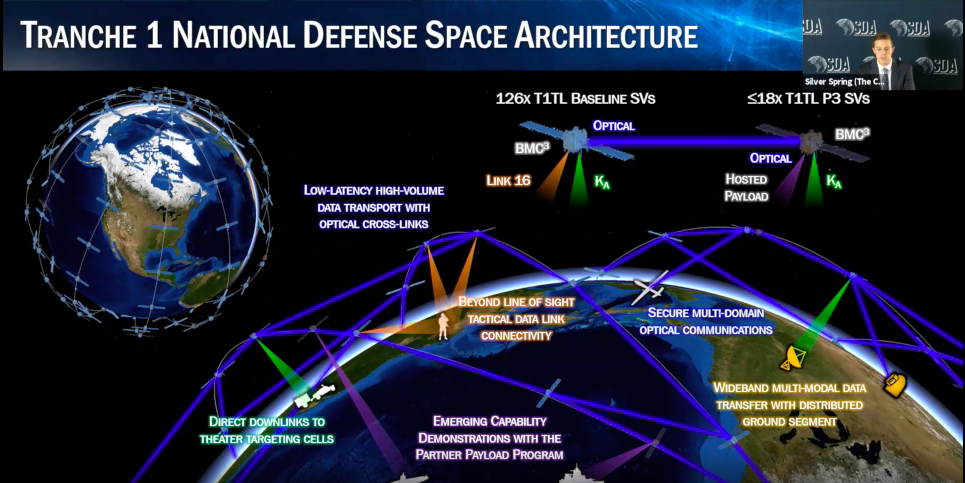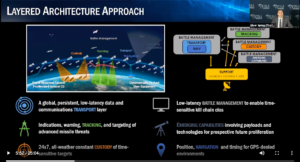
Space Development Agency Director Derek Tournear. (DoD photo by Lisa Ferdinando)
COLORADO SPRINGS: The Space Development Agency (SDA) plans to award a January 2022 contract for a set of roughly 144 data relay satellites that, once on orbit, will represent the start of the agency’s plan to cover the Earth in a new multifunctional network.
SDA Director Derek Tournear said this week that the request for proposals (RFP) to industry will be released on Monday Aug. 30 for the new sats, which make up what the agency calls “Tranche 1” of its planned National Defense Space Architecture.
“Shortly afterward, in January, we’ll have a solicitation for the operations and integration, and then we’ll have solicitations for the battle management applications and operating systems subsequently after that,” he told the Space Foundation’s annual Space Symposium here.
SDA held a virtual industry day Thursday to explain planned contracting for the Tranche 1 network. (Links to the presentations were made available to reporters.) Tranche 1 will be able to provide what agency charts call an initial warfighting capability to support a “high-end regional conflict.” In other words, while the advanced communications/data relay satellites will not be available everywhere around the world at the same time, they will be available 24/7 to support a conflict in a designated geographical area.
Tranche 1 will include up to 144 communications/data relay satellites — making up what SDA calls its Transport Layer — in Low Earth Orbit (LEO) orbiting in six different planes at about 1,000 kilometers, plus battle management and ground support elements. SDA plans to launch the satellites late in fiscal year 2024.
The Transport Layer is only one part of SDA’s planned architecture, which involves seven separate “layers” including missile warning and tracking satellites, and on-board payloads for providing positioning, navigation and timing in areas where GPS is compromised.
Billy Palmero, SDA program manager for the Tranche 1 Transport Layer (T1TL) explained that this stage of the agency’s plans will include 126 “baseline” satellites carrying a Ka-band space-to-ground communications link, four optical communications terminals, a Link 16 payload (which is the current standard for machine-to-machine communications link among US and allied weapon systems), and a battle management, command, control and communications (BMC3) compute and storage module.
Another set of up to 18 satellites, called partner payload program satellites, will also be procured, Palmero explained. These sats are variants of the baseline design, switching out two of the optical terminals and the Link 16 module to make room for mission partners — either other government agencies or industry — to demonstrate novel capabilities. An RFP for three experimental payloads is expected to be released late next year, according to agency charts.
Under the Tranche 1 effort, SDA plans to award three contracts to design and build all of the T1TL satellites. It also intends to pick one contractor for network operations and integration, and to give out “multiple awards” for BMC3, with an RFP for this capability issued in fiscal 2023.






















